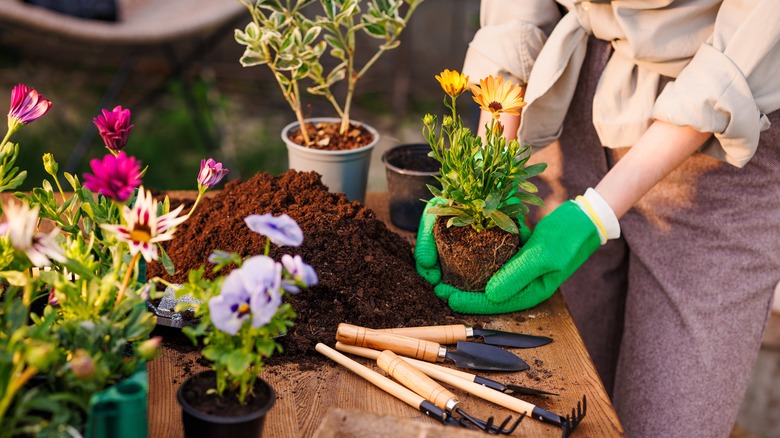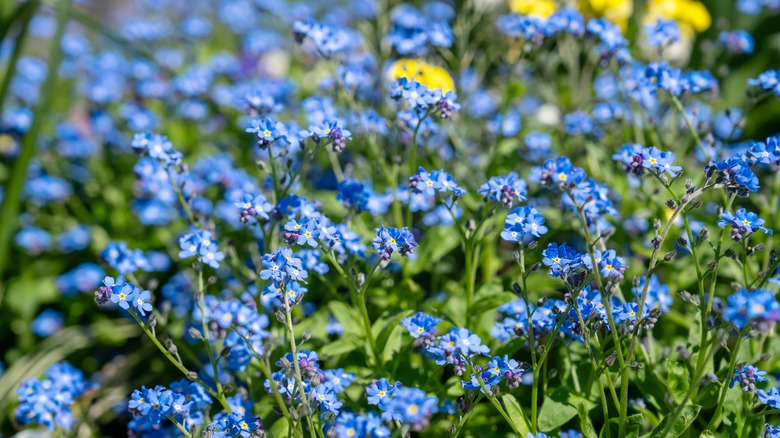The Stunning Blue Flower That Makes A Great Ground Cover (& One Downside To Look Out For)
There's something entirely magical about starting a simple cottage garden that looks like it was plucked straight from a storybook — with vibrant flowers and stone paths emanating a sense of calm. This type of garden is known for its low-maintenance and an environmentally conscious approach that certainly isn't lacking in aesthetics. One flower that fits perfectly into this vision is the woodland forget-me-not (Myosotis sylvatica). With its dainty, blue-colored petals and cheerful yellow centers, this humble flower spreads easily and forms a lush ground cover in the spring. It's especially well-suited for shaded areas and woodland borders, making it a top choice for spots where other ground covers struggle to survive.
In addition to its undeniable charm, the blue forget-me-not offers several practical benefits. It's deer resistant and pollinator-friendly, attracting bees and butterflies to your garden. It can be an excellent ground cover for homeowners who are looking to start a pollinator garden without the fear of delicate blooms getting eaten. Many gardeners love the plant for its natural ability to reseed itself and return each year, forming thick clusters over time. It pairs beautifully with tulips, ferns, and hostas, offering a harmonious palette and a soft, layered look. And once it's settled in, there's very little maintenance required. But, while its ability to self-sow is part of its appeal, it's also something to carefully consider before growing it in your garden. It's typically generous with its seeds, meaning they can spread far and quickly if left unchecked. You should also note that in certain regions of the United States, woodland forget-me-nots are considered invasive and a noxious weed, so you may need to check before planting them.
Consider the downside of growing this ground cover in your garden
While these flowers are a beloved pick for their delicate beauty and their carefree nature, successfully growing forget-me-nots isn't a tough task. They can be planted as an annual, but forget-me-nots are technically short-term perennials that come back each year. While these self-seeding flowers can effortlessly fill your yard with color, their growth can quickly get out of control. New flowers may crop up in extremely inconvenient places, like cracks in walkways, vegetable patches, and even pristine lawn edges, making maintenance a major, yearly issue. If left unchecked, forget-me-nots may also outcompete delicate flowers around your garden, becoming more of a nuisance than a spotlight feature among your other greenery.
Luckily, their spread is entirely manageable with a little routine upkeep. If you want to keep your forget-me-nots in check, you should deadhead the flowers before they begin seeding, typically just as the blooms begin to fade. Removing spent blossoms ensures that fewer seeds are dropped and gives you more control over where next year's plants will emerge. If seedlings do pop up in places that you don't want them, they are fairly easy to remove by hand in the spring when the soil is moist. You can also plant them in contained spaces like raised garden beds or decorative planters. Ultimately, the key is understanding what you're getting into, and how to easily manage the plant's aggressive spread. If you're drawn to forget-me-nots, don't let their carefree nature dissuade you from their beautiful blooms.

